Experimental fighter F-107A "Ultra Saber" (USA)
After the Saber debuted in Korea, the company gained a reputation as the “king of fighters”. Republic F-84 Thunderjet, Lockheecl F-80 Shooting Stare, aircraft of the closest competitors, "squeezed" into the category of fighter-bombers. Also by order fleet The batch version of the Saber, the FJ1 Fury fighter, was mass-produced. In addition to the United States, Sabers were built in Australia, Canada, Italy and Japan, and their total number reached almost 8 thousand. They were used for a long period in the air force of 30 countries. “North American” in 1949, consolidating the success, began to design its first supersonic fighter “Saber-45” or “model NAA 180”. It was planned to install a wing with a sweep of 45 degrees on this aircraft. However, at this time, the Pentagon gave priority to financing strategic nuclear bombers weapons. In this regard, the development of destructive programs has slowed significantly. Only at the end of 1951, on the basis of the Saber-45, the design of the new F-100 fighter was completed, designed to gain air superiority. In January of the following year, they signed a contract for its construction. The excellent reputation of the F-86 prompted the campaign to embark on a successful marketing move — a new car called the Super Saber. The prototype YF-100A took off 5 in May 1953. Already in the first sorties in horizontal flight it was exceeded the speed of sound.
The first serial F-100A was built on October 29. Thus, the aircraft «North American» became the world's first serial supersonic fighter. Soon, on this plane, Lieutenant Colonel Frank Everst from the air force test center reached the ground 1216 km / h. 27 September 1954, after a series of improvements, the F-100A was officially adopted. But, despite the "cold war", interest in the "clean" fighter significantly decreased by the customer. Even the US defense budget could not pull the development of several diverse programs. The era of multipurpose aircraft took its origin. Tactical Air Command (TAC, Tactical Air Comnnand) in December 1953 recommended that the company make a new version of the “Super Saber” that could perform tasks not only for the interceptor, but also for the fighter-bomber. This proposal is embodied in the modification of F-100C. This aircraft had a reinforced wing with fuel tanks and six underwing points of the armament suspension. The F-100C could carry 2270 kilograms of bombs and missiles, including the Mk.7 tactical nuclear bombs. On the plane could be installed in-air refueling system "hose-cone." On the F-100C 20 August 1955, the world set a world speed record, which amounted to 1323 km / h.
Almost all of the first supersonic aircraft were commissioned through a series of serious flight accidents. Super Saber was no exception. October 12 1954 was killed by George Welch, North American's chief pilot. During the exit from a dive with a large overload, the plane began to swing longitudinally and transversely. As a result, the plane collapsed in the air. To prevent this problem in the future, the pitch and roll control system was changed. Moreover, most of the innovations were made right on the assembly line, and the finished fighters were returned for revision. Despite this, “Super Saber” in the history of the US Air Force entered as a plane with a high accident rate. One of the factors that contributed to this was the high landing speed, which reached 330 kilometers per hour. This is explained by the fact that the aircraft had no flaps or landing plates, for which there was simply no room left on the wing, because they had to be moved to the fuselage due to the danger of reverse of the ailerons.
The most advanced and mass (released 1274 copies) modification of the “Super Saber” was the F-100D fighter-bomber, which was created in the 1956 year. The car received autopilot and advanced electronic equipment, as well as a bomb load increased to 3190 kg. To improve ground stability, the vertical tail area has been increased by 27 percent. Wing significantly finalized. Its scope was increased to 11,81 m (11,16 m), and a root influx was made along the trailing edge, which made it possible to install flaps. Total until October 1958 built the 2294 fighter of various options. These machines were used until the beginning of the 1980-s. Even before the creation of the F-100A, it was clear that the “race for speed” was far from over. In the Soviet Union, the MiG-19 fighter was developed, began to work out projects of supersonic bombers. We needed a plane that can fly at a speed that is twice the speed of a sound one. Naturally, the North American company tried to use those to the maximum extent. touched on the F-100.
In early 1953, the firm received preliminary requirements from the US Air Force for an improved Super Saber. On the basis of the F-100 in March 1953, two versions of the project were prepared: the F-100BI fighter-interceptor or "model NAA 211" (letter "I" - "Interceptor") and the F-100B fighter-bomber or "model NAA 212" ... In light of the "current preferences" of the Tactical Air Command, it was decided to focus on the second option. On the fighter-bomber, designed at a speed of about 1,8 M, it was planned to install the P&W J57 engine, as on the "Super Saber", but with a modified nozzle design. The design of the nose of the fuselage was to be similar to the F-86D fighter-interceptor. But there was a problem with the organization of the supersonic air intake. In this regard, in June 1953, the project was again radically altered. The F-100B received a new dorsal air intake with sharp edges and an automatically adjustable central wedge, the so-called VAID (variable-area inlet duct) or variable area inlet. The upper location of the engine duct and air intake made it possible to raise the wing and organize a zone under the fuselage for semi-submerged placement of special ammunition (tactical nuclear bomb V-28 or TX-28) or an additional fuel tank with a capacity of 250 gallons (946 liters).
The nose part, made in the form of a flat cone, and a lantern with a large glazing area provided a great view down and forward, which is very important for a strike aircraft. The lantern cover was folded up, and this did not allow the engine to be started until it was closed. The aircraft was equipped with a modified wing of the F-100C, but it had a back flow and flaps. The roll control was carried out with the help of interceptors on the lower and upper wing surfaces. The main landing gear were moved to the fuselage. The landing gear was removed in the direction against the flight. The most interesting innovations applied on the F-100B were all-turning (3 degrees in both directions) vertical tail of the increased area, which improved the directional stability of the aircraft. The XMA-12 integrated weapon control system was installed on the aircraft, the bomb load mass was reduced to 4535 kg.
In October 1953, a full-size fighter model was built, which looked very futuristic by the standards of that time. Around the same time, the decision was made to use the latest P&W YJ75-P-11 turbojet engine. According to calculations, this made it possible to increase the speed to 2M. On June 11, 1954, a contract was signed between the developer and the Air Force for the construction of 33 F-100B fighter-bombers. The first three of them were intended for flight tests. North American was so confident of victory that on July 8 the aircraft was given a new designation F-107A (the designation was missing the first letter "Y" indicating the pre-production aircraft). The developer, promoting his project, made an attempt to offer the fleet aviation under the name "Super Fury" deck version, but this did not give results.
Officially, the F-107A design engineering kicked off on 1 on May 1955. Test pilot Bob Baker of September 10 1956 of the year lifted the F-107A into the air from the runway of Edward Air Base. During this dive flight, the 1,03M speed was achieved, but then the engine-regulator pump crashed. The pilot had to make an emergency landing. Increased landing speed (more than 360 km / h) caused by the flaps and hydraulic failures, as well as non-working wheel brakes caused the mileage to be 6700 meters. The plane went to the dirt security lane, where it damaged the front landing gear. The aircraft was quickly restored, and already on October 1 it developed speed in 2M. In total, the first stage of testing performed 30 flights. In the second stage of the tests (03.12.1956 - 15.02.1957), the second prototype was used, during which the 32 flights were made. After that, the aircraft was used to practice the use of weapons. The pilots said that in comparison with the F-100 piloting the F-107 was more pleasant. For the third stage of testing was built the third and, the last F-107A. It tested the work of the air intake in various flight modes. At the same time, the first prototype carried out several tests for rate of climb, during which the aircraft exceeded the speed of sound during the climb.
North American wasn’t the only developer fighting to win. "Republic", which had vast experience in creating fighters, in 1952 came out with an initiative proposal and signed a contract with the tactical aviation command for the design and creation of 199 machines (later their number was reduced to 37 copies), created to replace the F-84F fighter-bombers Thunderstreak. The new aircraft was intended to deliver tactical nuclear weapons and conventional aerial bombs at supersonic speeds in various weather conditions. The full-size mock-up of the fighter, named YF-105 and proper name Thunderchief, was built in October 1953. The final task was formulated in December 1953. At the same time, a contract was signed for the supply of 15 pre-production aircraft. It was planned to build 2 copies of the YF-105A intended for preliminary flight tests, 3 prototypes of the RF-105B reconnaissance aircraft (renamed JF-105B), 10 in the F-105B variant intended for military tests. Since the required P&W J75 engine was not ready yet, the YF-105A was built with the "old" P&W J57. It was supposed to install a new power plant from the third prototype.
October 22 1955, the first flight of the YF-105A took place - so he outran the competitor by almost a year. Naturally, he lost the F-107A in almost all parameters, except for the presence of an internal bomb compartment, as well as the newest M-61 “Vulkan” super-speed gun, which made it possible to do with one tool, and not four. The F-105B was more or less equal to the competitor, but the truly full-fledged tactical strike aircraft was the F-1959D that appeared two years after the end of the competition (in 105 year). In the summer of 1957, the leadership of the Air Force delivered the final verdict. YF-105 "Thunderchief" won. An 923 instance has been released. Most likely, the Pentagon has made a political choice. At that time, “Republic” had no other programs in development, and “North American” was fully loaded. At the same time, the first studies of the XB-70 supersonic strategic bomber, the A-5 Vigilante supersonic carrier of nuclear weapons, and a number of other programs began. Thus, the military wanted to keep “Republic”, and the F-105 became its “lifeline”.
Probably, the Americans did not lose. F-105 during the war in Indochina showed a very high survivability and earned the love of the crews. And although the operational and combat losses of the “Thunderchiefs” amounted to 397 machines (almost 45 percent of the number of issued), they completed 75 percent of all bombardment tasks. But the F-107A in the history of "North American" was the last fighter. After a lost competition, the construction of the remaining aircraft was canceled. The prototype F-107A for some time tested on the use of weapons, including special ammunition, the discharge of which worked at speeds up to speed 2M. The remaining two specimens were handed over to NACA, where they served to work out a supersonic air intake and a full-turning keel. 1 September 1959, one of the aircraft crashed on takeoff and no longer flew. It was used for training fire brigade. The remaining cars were later transferred to museums, where they are still kept.
Performance characteristics:
Wingspan - 11,15 m;
Length - 18,45 m;
Height - 5,89 m;
Wing area - 35,00 m2;
Empty weight - 10295 kg;
Maximum take-off weight - 18840 kg;
Engine - Pratt & Whitney J75-P-9 bypass turbojet
Maximum thrust - 7500 kg;
Traction on afterburner - 11113 kgf;
Maximum speed - 2336 km / h;
Cruising speed - 965 km / h (M = 2,2);
Practical range - 3885 km;
Rate of climb - 12180 m / min;
Practical ceiling - 16220 m;
Armament:
- four 20-mm guns (mounted on the sides of the front of the fuselage in pairs)
- Underwing locks with a total capacity of 4500 kg;
Crew - 1 man.
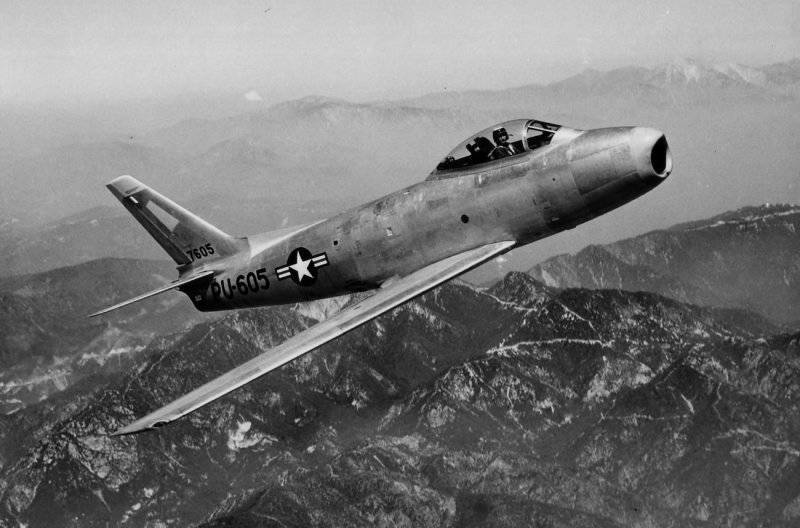
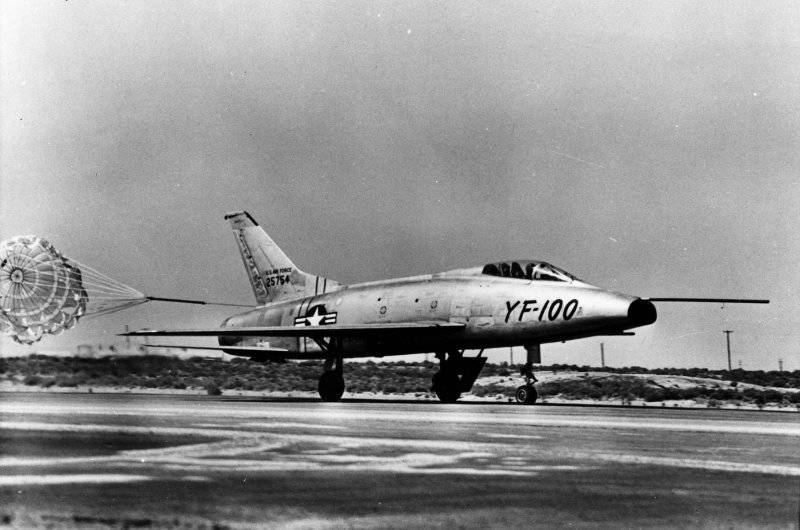
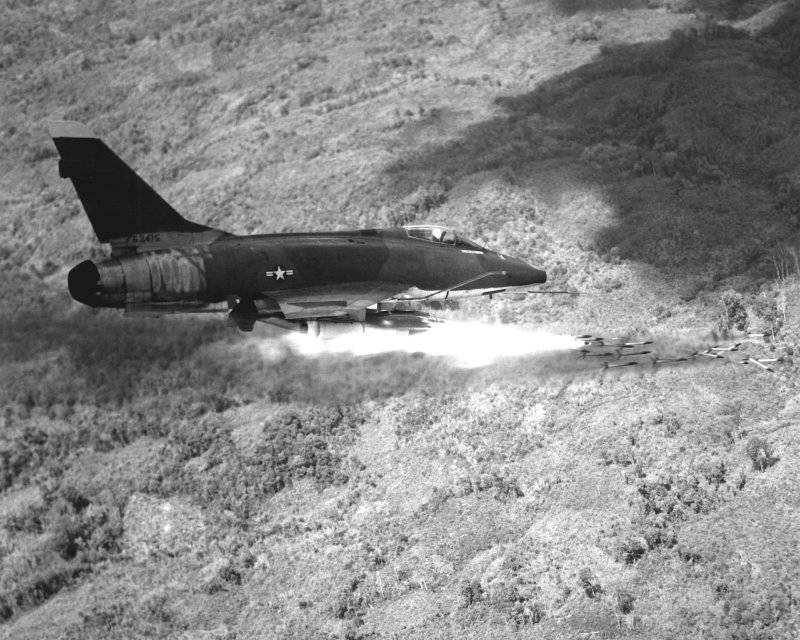
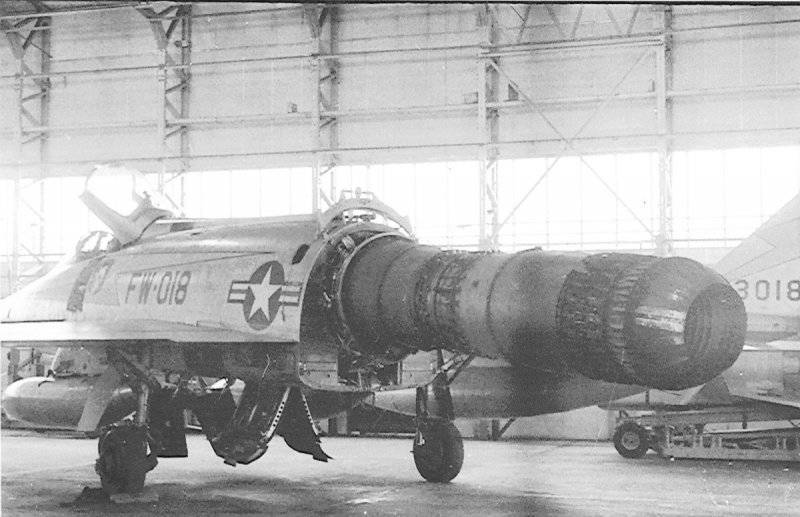
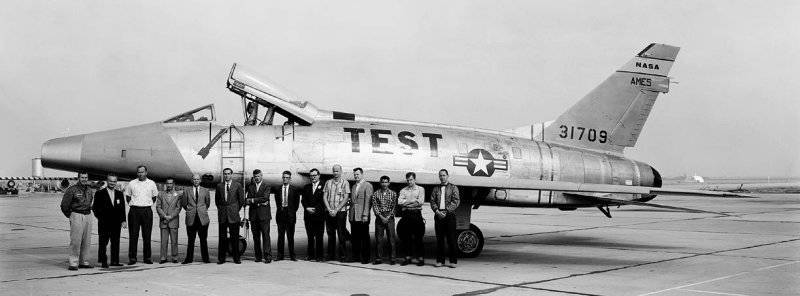
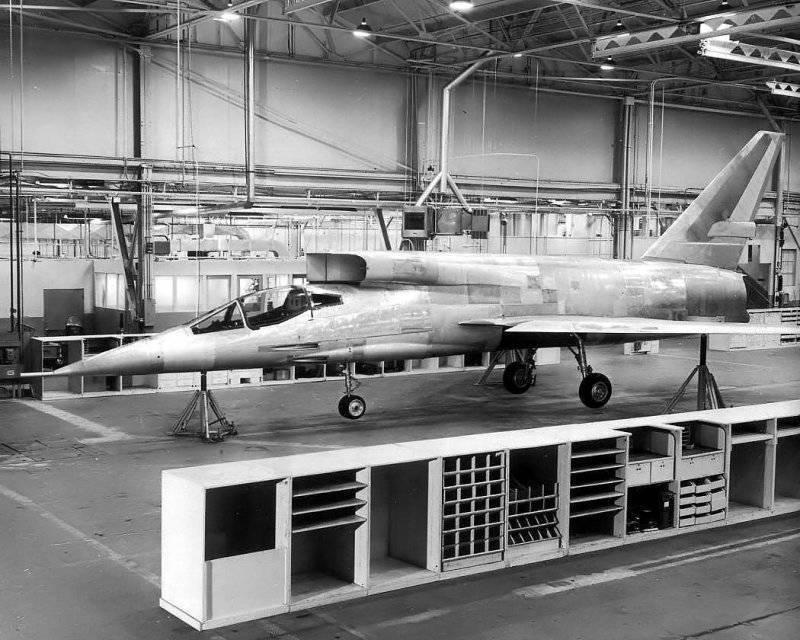
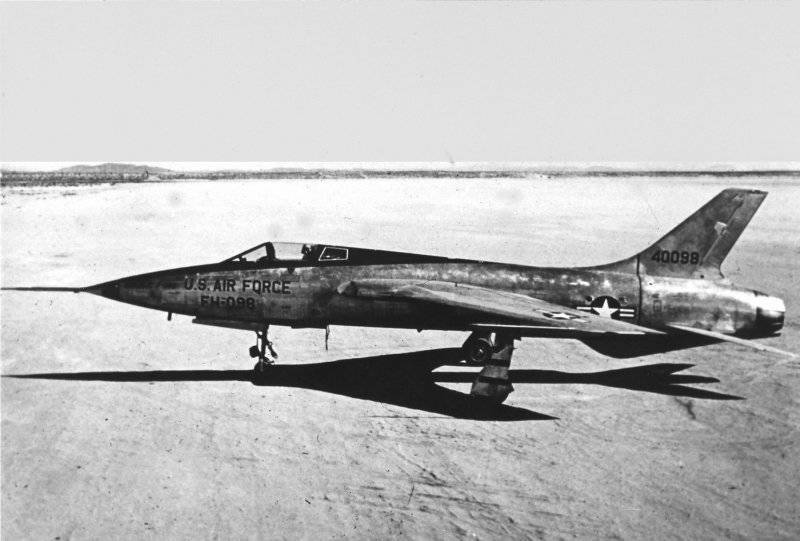
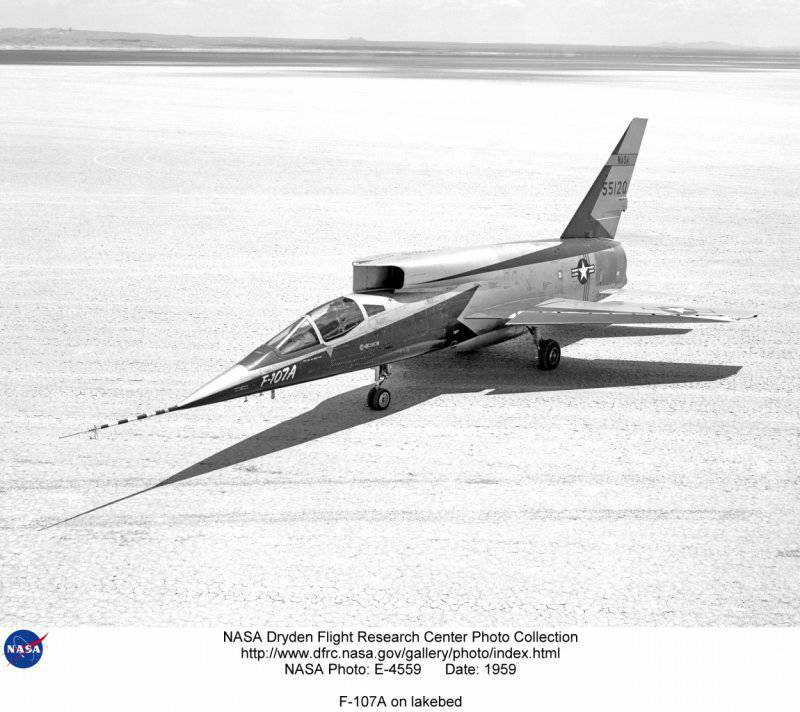
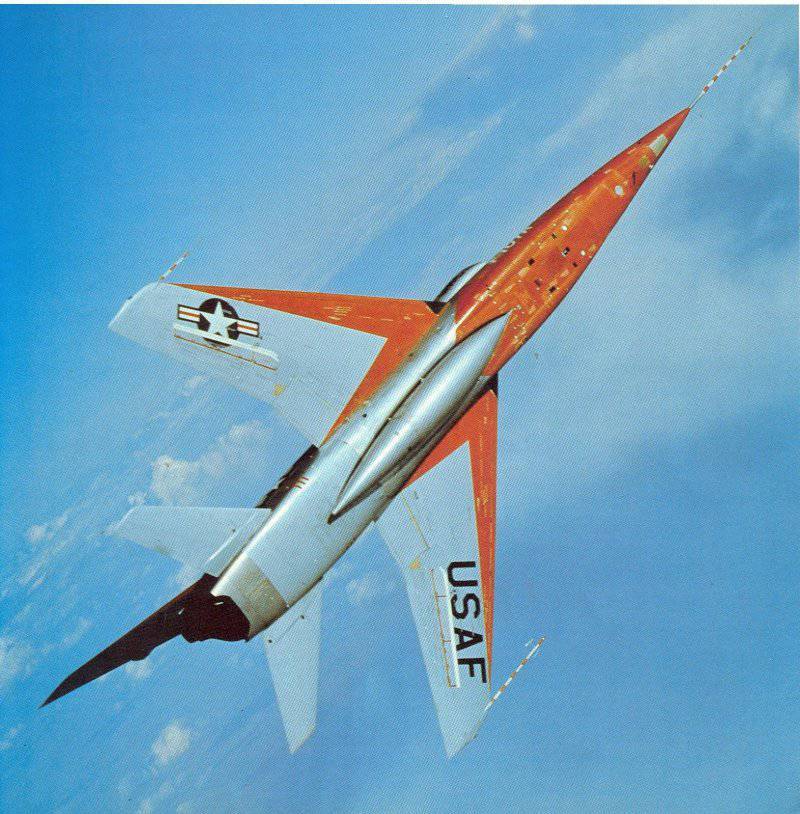
Information